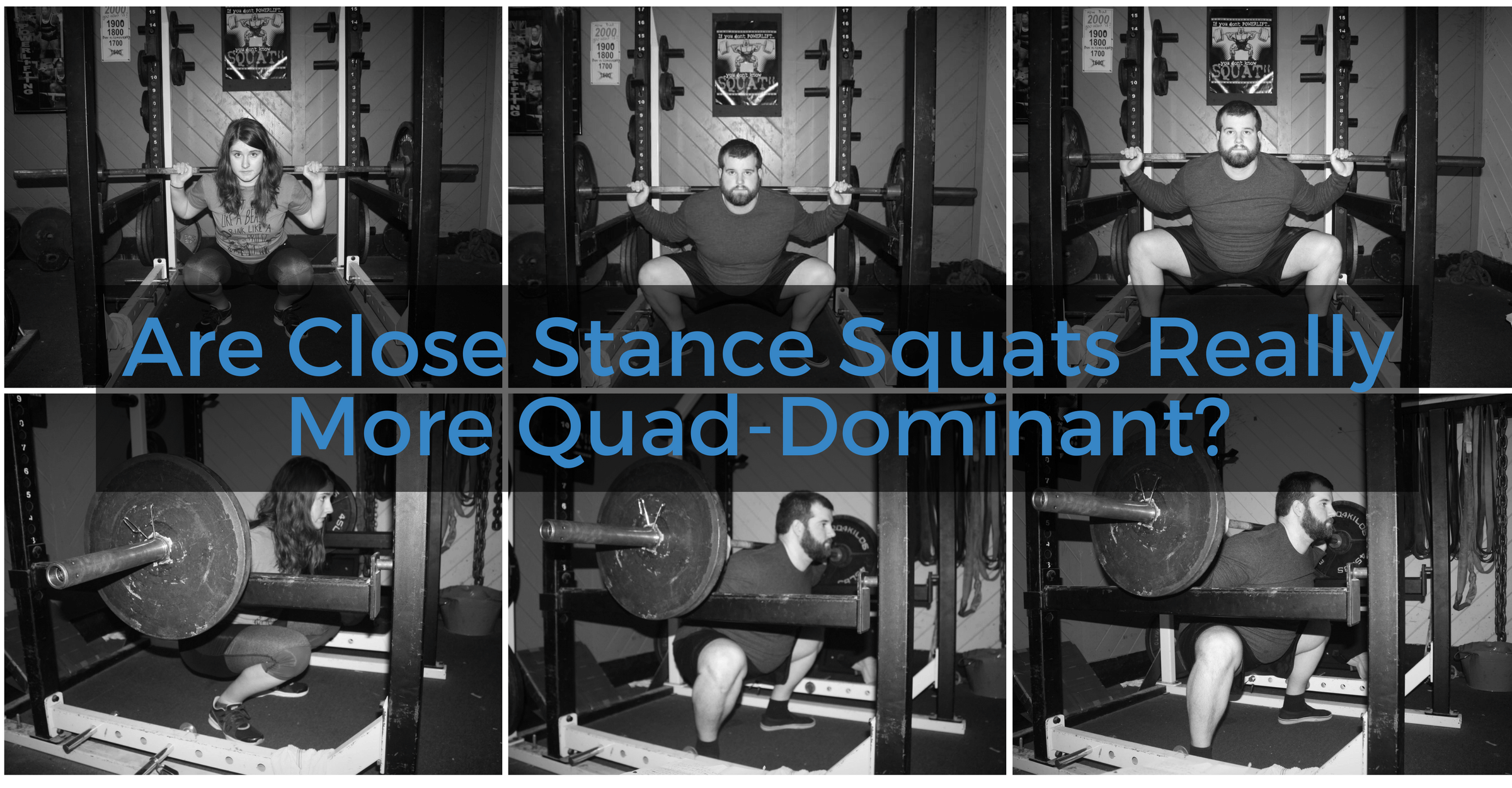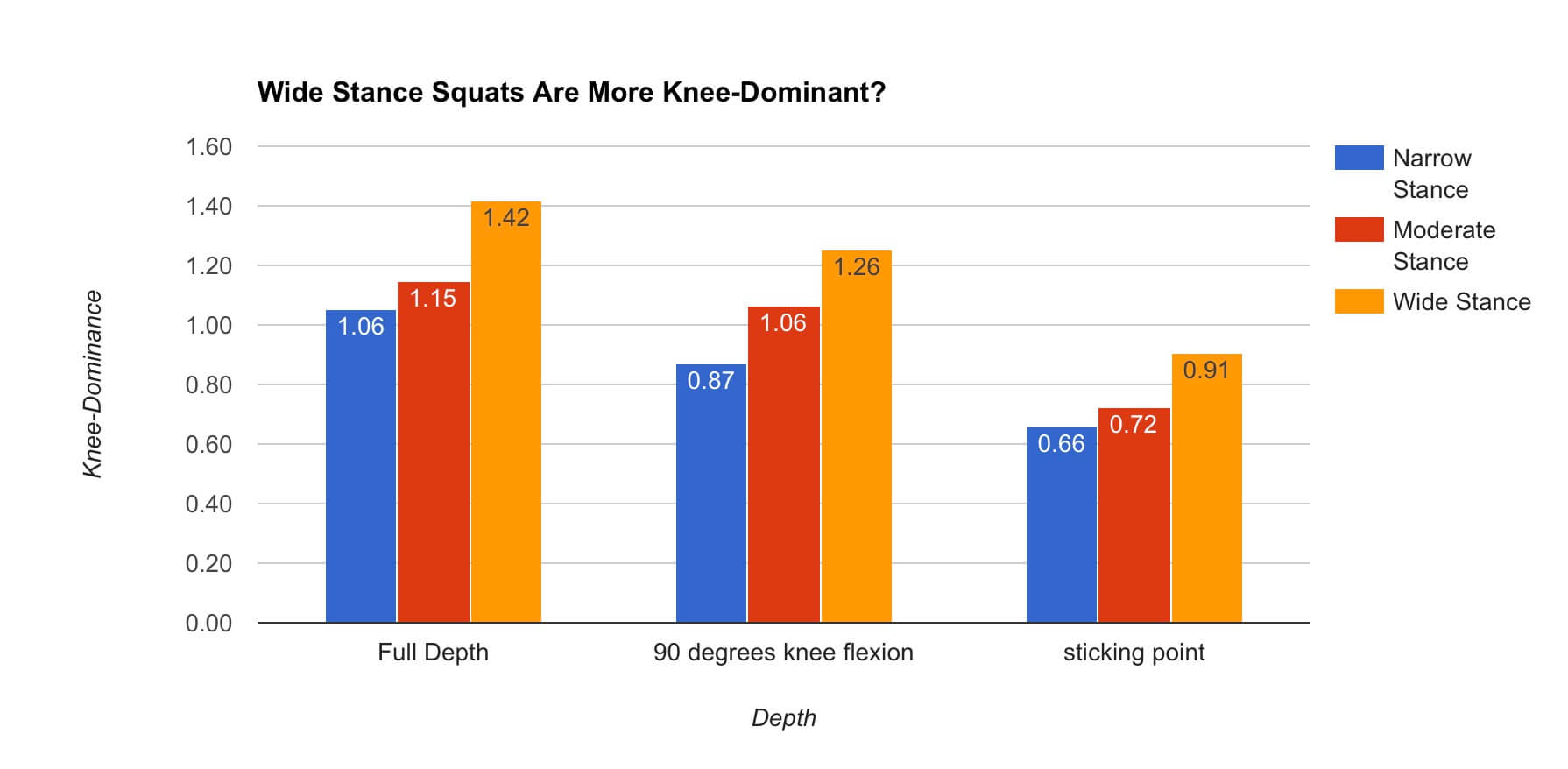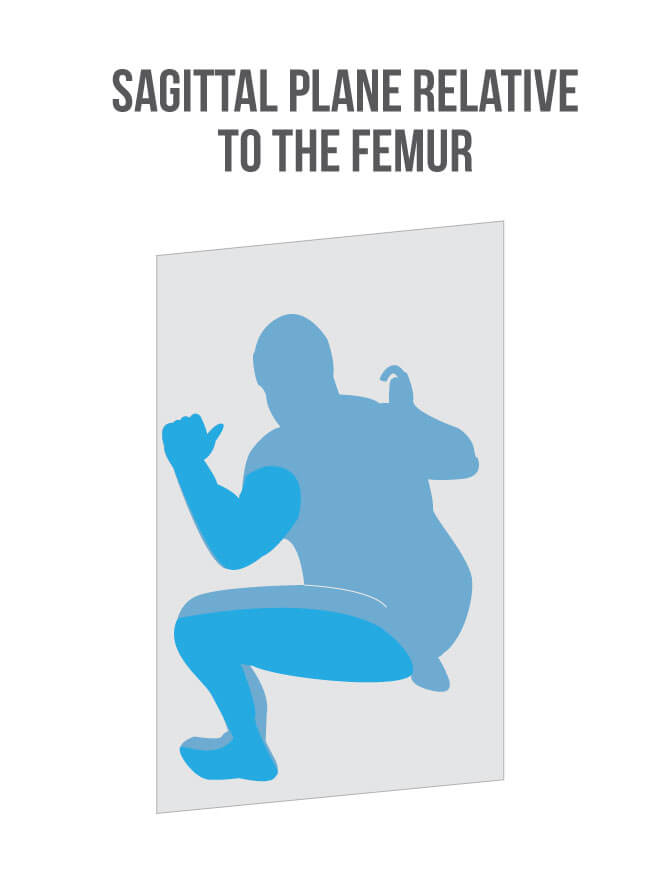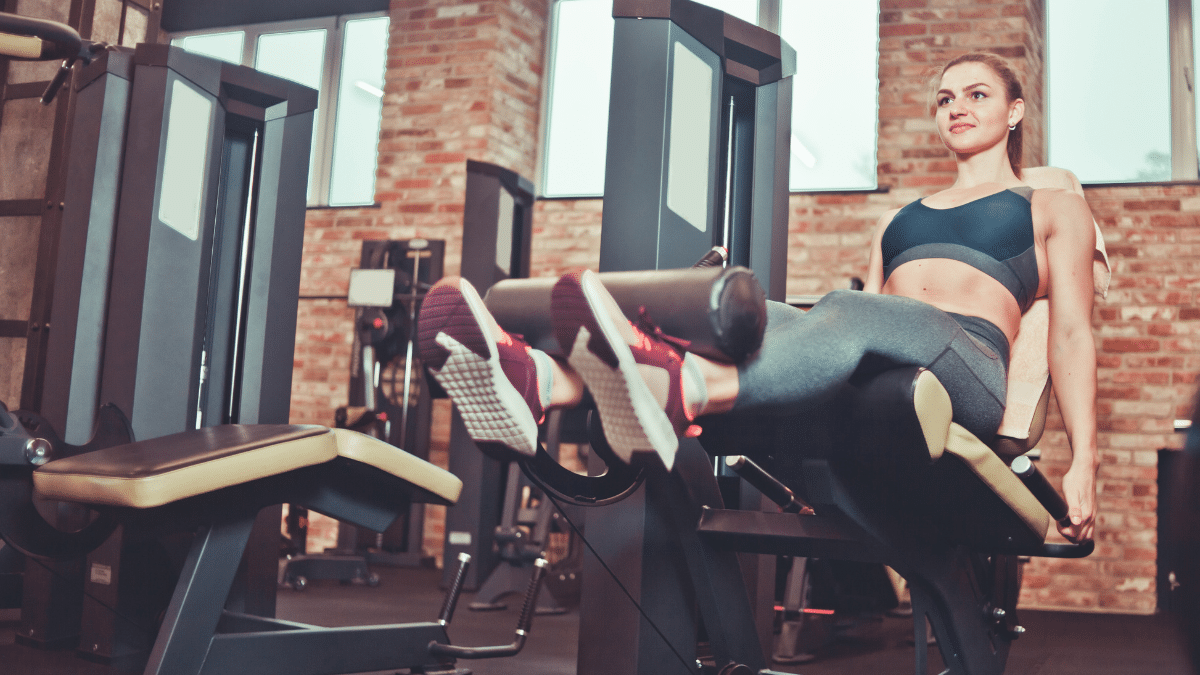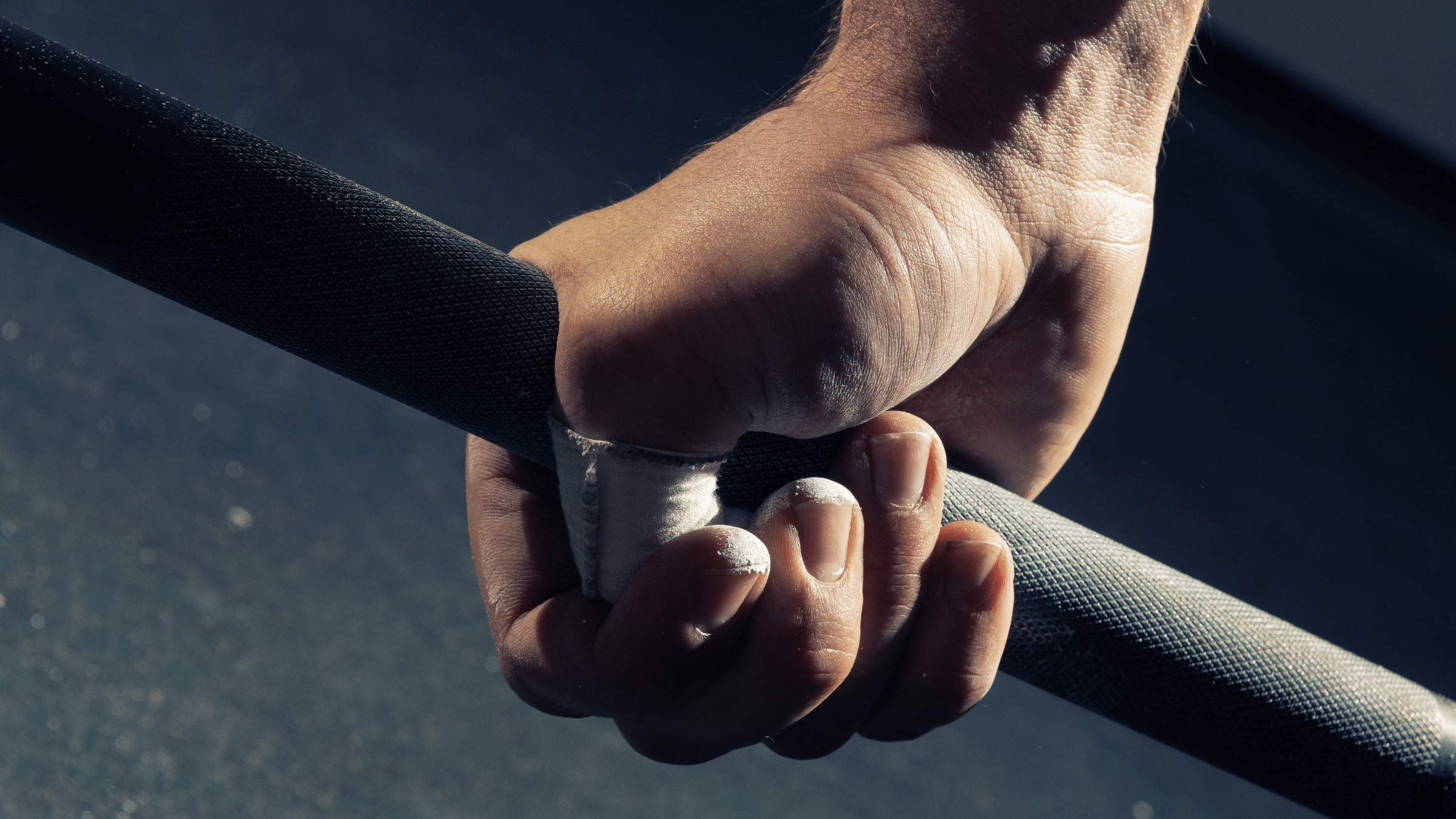I realized something interesting when I was re-reading one of my favorite journal articles (and yes, instead of re-watching TV shows for fun, I re-read journal articles. Don’t judge): The typical gym wisdom that close stance squats are more quad-dominant may be wrong.
The study is titled A Three-Dimensional Biomechanical Analysis of the Squat During Varying Stance Widths by Escamilla et al. (2001). The participants were nationally competitive masters lifters (at least 40 years old). The average weight of the group was 90kg (~200lbs), and the average squat was 225kg (~500lbs). It should be noted that the meet where these data were collected allowed supportive gear, but since this study was conducted in 2001 (before gear started getting insane) and the ADFPA (previously the USAPL) only allowed single ply gear, that shouldn’t be too big of a concern.
The study split the groups by stance width. Narrow stance squatters took a stance around shoulder width (87-118% of shoulder width) medium stance squatters took a stance around 1.25-1.5x shoulder width, and wide stance squatters took a stance around 1.5-2x shoulder width. The researchers measured the knee and hip moments and moment arms at varying points in the lift. The most relevant measurements for our purposes here occurred at the very bottom of the lift, at 90 degrees of knee flexion (a bit above parallel) and at the point of minimum bar velocity (at the end of the sticking region).
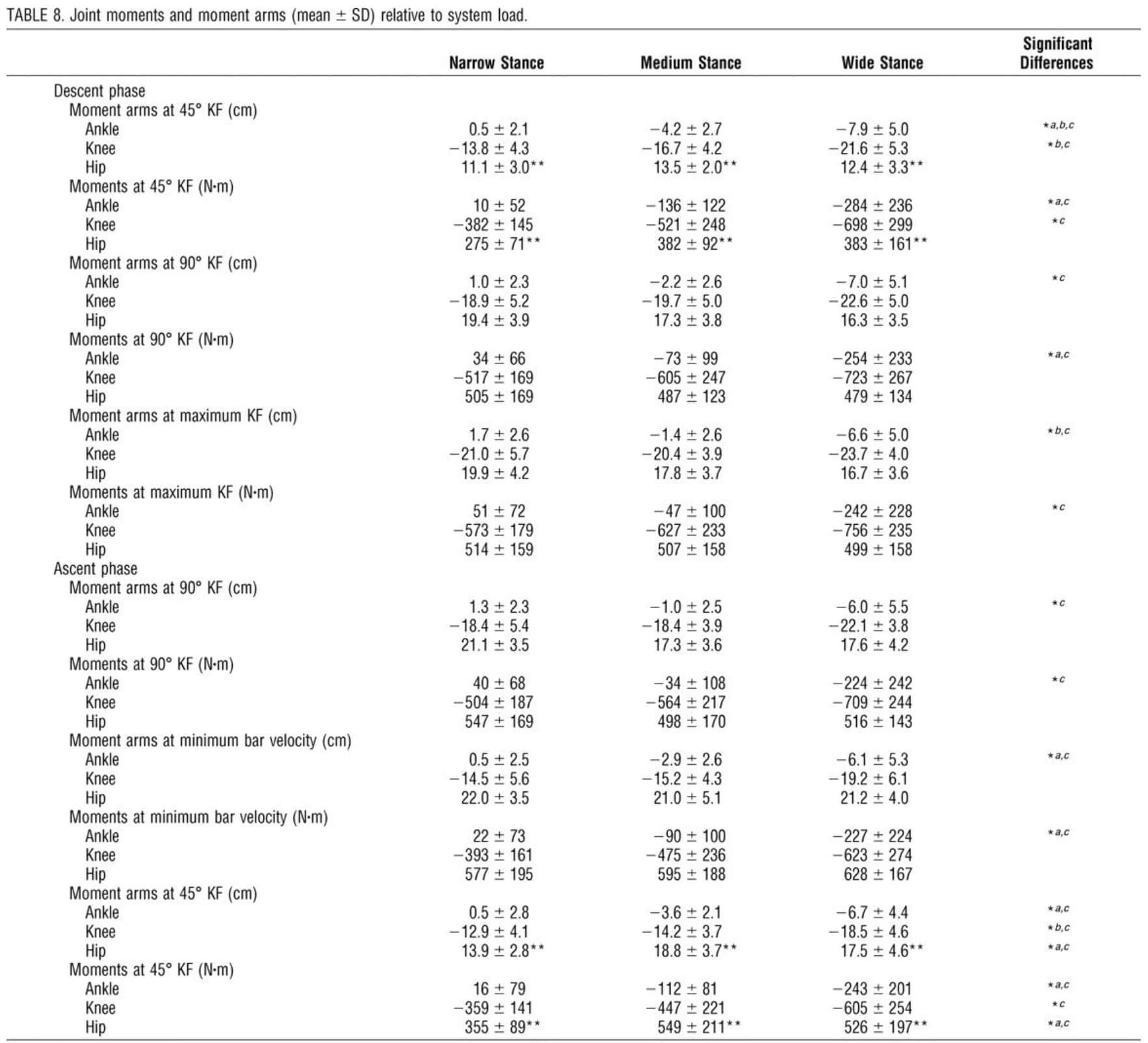
For this analysis, I’m only going to focus on the moment arms, rather than the actual joint moments. That will make for a fairer apples-to-apples comparison since the wide stance squatters were, on average, bigger and stronger than the narrow and medium stance squatters, which leads to larger joint moments. Furthermore, I’ll be focusing on the ratio of knee-to-hip moment arms to account for any group differences in femur length.
I defined “knee dominance” by this simple calculation: knee moment arm ÷ hip moment arm = knee-dominance. A value of 1 indicates equal moment arms about the knees and hips, a value greater than 1 indicates a larger moment arm about the knee, and a value less than 1 indicates a larger moment arm about the hip. The larger the number, the more knee-dominant a position is.
As you can see, all three squats are more knee-dominant in the hole than at the sticking point, but the wide stance squatters were the most knee-dominant at all three points in the lift.
This is interesting because typical bro wisdom says that narrow stance squats are more knee-dominant and better for building the quads, while wide stance squats are more hip-dominant and better for building the posterior chain. However, at all (meaningful) points in the lift, the wide stance squats were about 18-44% more knee-dominant than medium and narrow stance squats.
That may all strike you as odd. Viewed from the side, it almost always looks like there’s more forward knee travel in a close stance squat. However, it makes sense when you remember that knee and hip flexor/extensor moments need to be calculated in the sagittal plane relative to the femur, not relative to the torso (if that terminology is confusing, review the biomechanics section of my squat guide for a refresher).
So, wide stance squats were actually more knee-dominant in this study. Case closed, right?
Not so fast.
Keep in mind, there were different people in all three groups in this study. All participants were allowed to select the stance that was strongest for them (as the data were collected in-competition). So, it may not be that wide stance squats are inherently more knee-dominant. It may instead be that other factors simultaneously influence people to both squat with a wider stance, and to adopt a more knee-dominant squat.
Let’s look a bit deeper into the literature.
Only one other study looked at joint moments. Swinton et al. (2012) reported peak joint moments in the “traditional” squat compared to the “powerlifting-style” squat. Stance width was approximately twice as wide for the powerlifting squat vs. the traditional squat. However, it’s worth noting that the instructions in this study were considerably different. In Escamilla’s study, the participants used whatever technical approach allowed them to lift the most weight to competition standards; in Swinton’s, the participants were instructed to let their knees travel past their toes for the traditional squat, and to keep their shins as vertical as possible in the powerlifting-style squat.
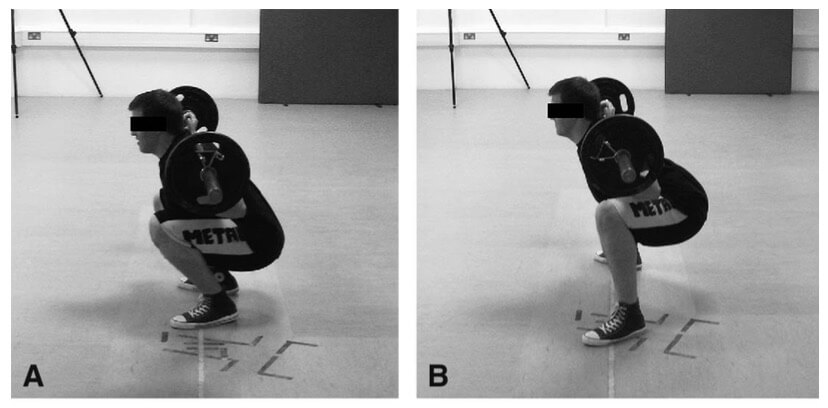
In Swinton’s study, the peak knee moment arm was roughly 10% longer, and the peak knee moment was roughly 5% larger for the traditional squat versus the powerlifting-style squat. However, again, it’s worth noting that this study wasn’t solely investigating the impact of stance width. It was also, more saliently, investigating the effects of forward knee travel, as discussed here (Sitting Back vs. Down In The Squat: Much Ado About Very Little) instead of allowing the participants to optimize their technique for strength with each stance width.
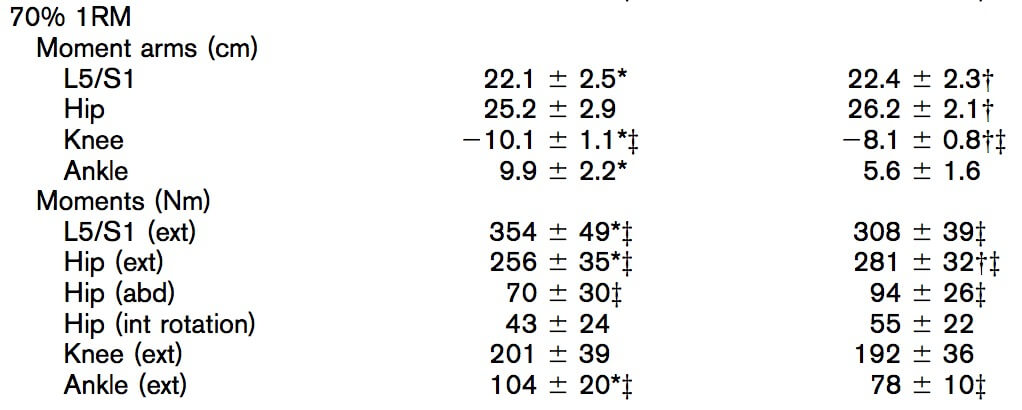
Finally, three studies (one, two, three) have compared muscle activation (using EMG) in squats of varying stance widths. None of them found any differences in any of the quad muscles, though two reported slightly higher glute EMG with wide stance squats. However, it may not be wise to read into the EMG findings too much; they don’t correlate perfectly with joint moments and can be influenced by changes in joint angles (muscles simply have higher EMG readings in some positions than others).
So, at this point, there’s not a clear answer to the question posed in the title of this article.
Only one study has actually looked at the way stance width impacts joint moments while allowing the participants to squat with the technique that lets them lift the heaviest loads. However, it didn’t test each participant with each stance width; maybe the wide stance squatters with more knee-dominant squats would have still had more knee-dominant squats if they were asked to squat with a narrow stance, and maybe the more hip-dominant narrow stance squatters would still be just as hip-dominant if they were asked to squat with a wider stance.
The only study looking at joint moments that tested the same participants with two different stance widths reported a slightly higher peak knee moment with a narrower stance, but it also specifically restricted forward knee travel with a wide stance, which removes the chance for an apples-to-apples comparison.
Finally, several studies have shown that stance width doesn’t really impact quad activation, though wider stance squats may do a slightly better job of activating the glutes.
Taken in totality, there’s probably not enough evidence to unequivocally state that any particular stance width is inherently more knee-dominant because we just don’t have any studies with the proper design to conclusively answer that question. However, we can state, quite confidently, that the common wisdom (close stance squats are way more knee-dominant, and wide stance squats are way more hip-dominant) is probably wrong. I don’t see any reason to think that wide stance squats can’t train the quads just as well as narrow stance squats do.
This article ends with a piece of advice that should sound familiar to consistent readers: this is a detail that’s probably not worth getting too hung up about. Feel free to squat with the stance width that’s the most comfortable for you. The stance width that allows for the longest range of motion will likely be your best bet for building your quads (which may be narrower for some people and wider for other) but the inherent influence of stance width itself seems to be pretty minimal.
If you want to learn a LOT more about squatting, then you should check out How to Squat: The Definitive Guide. I can guarantee you that it’s the most thorough resource on the internet for learning and troubleshooting the squat.
Read Next
- How To Help Your Squat Catch Up With Your Deadlift
- High Bar And Low Bar Squatting 2.0
- Sitting Back vs. Down In The Squat: Much Ado About Very Little

